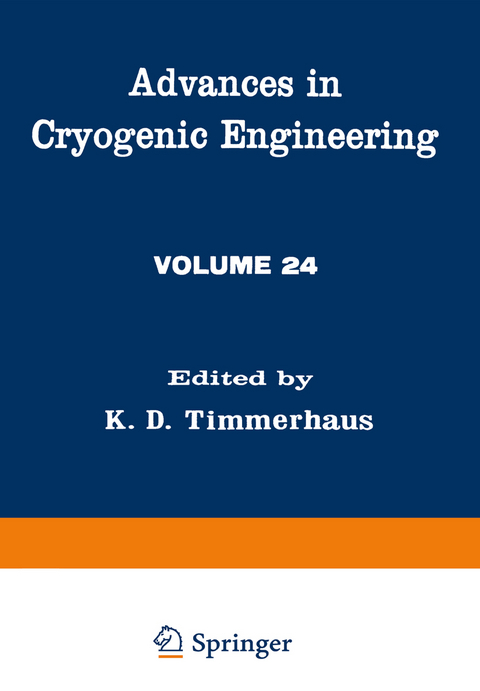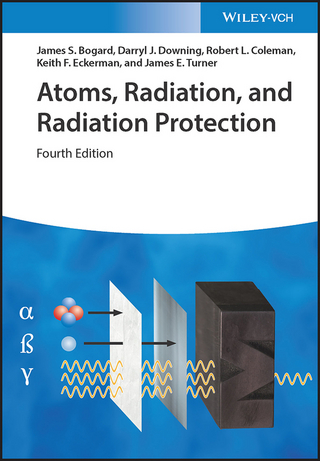
Advances in Cryogenic Engineering
Springer-Verlag New York Inc.
978-1-4613-9855-4 (ISBN)
General Reviews.- A—1 Large Superconducting Magnets for New Energy Technologies.- A—2 Low-Temperature Properties of Epoxy Resins and Composites.- A—3 The Development of Cryogenic Materials Science in the USSR.- A—4 A Low-Temperature Materials Research Program for Magnetic Fusion Energy.- A—5 Composite Materials for Cryogenic Structures.- A—6 Summary of the International Discussion Meeting on Radiation Effects on Superconductivity.- A—7 Fatigue Crack Growth Resistance of Structural Alloys at Cryogenic Temperatures.- A—8 Fe-Mn Alloys for Cryogenic Use: A Brief Survey of Current Research.- A—9 Elastic Constants at Low Temperatures: Recent Measurements on Technological Materials at NBS.- Ferrous Alloys.- B—1 Low-Temperature Weldable Steels and Alloys.- B—2 Cryogenic Properties of a New Tough-Strong Iron Alloy.- B—3 The Suppression of Low-Temperature Intergranular Brittleness in Ferritic Fe-Mn Alloys.- B—4 Surface Film Effects on Deformation Behavior of Iron Single Crystals at Cryogenic Temperatures.- B—5 Evaluation of Weldments in Austenitic Stainless Steels for Cryogenic Applications.- B—6 Note on the Fracture Properties of Fe-49Ni at Cryogenic Temperatures.- Nonferrous Alloys.- C—1 Fracture Strength of Thick 5083-0 Aluminum Alloy for LNG Storage Tanks.- C—2 Metallurgical Problems of Welding 1201 (Al—6Cu—Mn) Alloy.- C—3 Environmental-Assisted Fatigue Crack Propagation in 3003-0 Aluminum.- C—4 The Influence of Processing and Heat Treatment on the Cryogenic Fracture Mechanics Properties of Inconel 718.- C—5 Experimental Analysis of Cracks in Thin Metal Plates.- Structural Alloys—Physical Properties.- D—1 Specific Heats of Some Cryogenic Structural Materials I—Fe—Ni—Base Alloys.- D—2 Magnetic Field Effect on ThermalConductivity of Selected Metals.- D—3 Standard Reference Materials for Thermophysical Properties.- D—4 Diffuse Cluster Superparamagnetism in Inconel X750.- D—5 Temperature Dependence of Creep in F.C.C. and H.C.P. Metals at Low Temperature.- Composites.- E—1 Stainless Steel Fiber Organic Matrix Composites for Cryogenic Application.- E—2 Glass-Reinforced Epoxy Piping for Liquid-Nitrogen-Cooled, AC Transmission Cables.- E—3 Fiberglass-Epoxy in a Conical Superconducting Field Magnet Support.- E—4 Compressive Strength of Glass-Fiber-Reinforced Composites at Room Temperature and 77 K.- E—5 An Epoxy Fiberglass Tension Member Support for Superconducting Magnets.- E—6 Specific Heats of Some Cryogenic Structural Materials II—Composites.- E—7 Distribution of the Effective Thermal Conductivity in a Porous Insulation System Subjected to Internal Vapor Circulation.- Superconductors—Stress Effects.- F—1 Fatigue and Stress Effects in NbTi and Nb3Sn Multifilamentary Superconductors.- F—2 Evaluation of Large, Multifilament Nb3Sn Conductors with a New 12-Tesla Tensile Test Apparatus.- F—3 Influence of Tensile Stresses on the Superconducting Temperature of Multifilamentary Nb3Sn Composite Conductors.- F—4 Mechanical Properties of Multifilamentary Nb3Sn Superconductors.- F—5 Resistance to Strain Degradation in Preliminary UWMAK TF Coil Conductors for Fusion Reactors.- Superconductors—Pinning.- G—1 How Effectively Can Grain Boundaries Pin Flux Lines?.- G—2 Critical Currents in Thin Nb3Ge and Nb3Ga Films.- Superconductors—Multifilamentary.- H—1 Critical Current Density in Multifilamentary Composites.- H—2 High-Current Al-TiNb Composite Conductor for Large Energy Storage Magnets.- H—3 Fabrication and Properties of an Aluminum-Stabilized NbTiMultifilament Superconductor.- H—4 Performance of Multifilament Nb3Sn Conductors for High-Field Applications Prepared by Competing Processes.- H—5 Multifilamentary Nb3Sn Composites Incorporating a High-Tin Bronze.- H—6 Combined Transport Current and Transverse Field Losses in Multifilament Superconductors.- H—7 Alternating Field Losses in Filamentary Superconductors Carrying DC Transport Currents.- H—8 Superconductors for Tokamak Poloidal Field Coils.- Superconductors—Films and Tapes.- I—1 Preparation and Superconducting Properties of Thin NbN Films in Magnetic Fields.- I—2 Properties of Superconducting Nb3Sn Layers Used in RF Cavities.- I—3 Nb3Sn Conductors for AC Power Transmission: Electrical and Mechanical Characteristics.- I—4 Nb3Ge as a Potential Candidate Material for 15- to 25-T Magnets.- I—5 Nb3Ge and Nb3Sn Films Prepared by High-Rate Magnetron Sputtering.- Special Electrical Materials.- J—1 Evaluation of Metal-Foil Strain Gauges for Cryogenic Application in Magnetic Fields.- J—2 Dielectric Loss Spectrum of Hydrated Vitreous Silica.- J—3 Measurements of Mechanical and Electrical Properties of High-Purity Aluminum.- U.S./USSR Exchange Program on LNG Materials Research.- K—1 Mechanical Properties of Soviet and American Al-Mg Alloy Plates and Welds for LNG Systems.- K—2 Mechanical Properties of U.S./USSR Al-Mg Plate and Welds for LNG Applications.- K—3 Low-Temperature Fracture Properties of a USSR Aluminum—6% Magnesium Alloy.- K—4 An Evaluation of Three Steels for Cryogenic Service.- K—5 Investigation of Steels for Their Application in LNG Transportation and Storage Welded Systems.- K—6 Fracture Toughness of Cryogenic Alloys.- K—7 Fracture Mechanics Parameters for an Iron—13% Chromium—19% ManganeseStainless Steel and Its Welds at Cryogenic Temperatures.- Indexes.- Author Index.- Material Index.
| Reihe/Serie | Advances in Cryogenic Engineering ; 24 |
|---|---|
| Zusatzinfo | 80 Illustrations, black and white; XII, 586 p. 80 illus. |
| Verlagsort | New York, NY |
| Sprache | englisch |
| Maße | 170 x 244 mm |
| Themenwelt | Schulbuch / Wörterbuch |
| Geisteswissenschaften | |
| Naturwissenschaften ► Physik / Astronomie ► Angewandte Physik | |
| Sozialwissenschaften | |
| Technik ► Maschinenbau | |
| ISBN-10 | 1-4613-9855-X / 146139855X |
| ISBN-13 | 978-1-4613-9855-4 / 9781461398554 |
| Zustand | Neuware |
| Haben Sie eine Frage zum Produkt? |
aus dem Bereich


